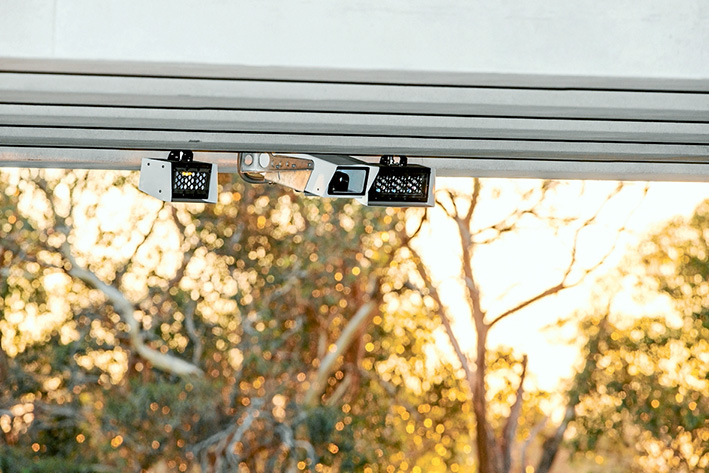THE Road Safety Camera Commissioner has backed the performance of the Peninsula Link speed cameras and reproached motorists contesting their fines.
The commissioner, John Voyage, was asked to investigate the cameras by Police Minister Lisa Neville after “public disquiet about the system” – most noticeably by members of the 108 group who claimed they had “set their vehicle’s cruise controls and so the detected speed reading was in error”.
Mr Voyage stated in his report that he was “unable to find any error in any of the aspects of the road safety camera systems along Peninsula Link”.
His investigation covered six sites of instant camera systems and four point-to-point zones.
“I find there to be a pervasive culture … among drivers of slowing at cameras and then speeding up after passing the camera,” Mr Voyage said.
“I also find that there is substantial misunderstanding by … drivers of the way the point-to-point road safety camera systems on Peninsula Link operate.”
Mr Voyage stated that “after the most detailed analysis … no errors or faults were found. “The system is operating accurately, and its integrity has been validated.”
Three cameras gauge drivers’ speed between the Skye Rd Bridge, Frankston, and Mornington-Tyabb Rd, Moorooduc, going south, and three face drivers going north, between Loders Rd and Skye Rd.
At each camera site dual devices measure the speed of every vehicle the instant it passes the camera. A photograph is taken of every vehicle passing through, regardless of the speed. Vehicles’ registrations are matched, as well as the time at each point.
Zones between cameras have been measured, so the calculation of distance divided by time gives a minimum average speed between the two points, or point-to-point speed.
Mr Voyage said only two drivers had backed up their complaints with data.
“Using the data logs supplied … we were able to track these two vehicles’ journeys, as well as the journeys of vehicles travelling in their vicinity. The data records these vehicles overtaking numerous other vehicles but not being overtaken.
“A third driver, who has not contacted my office, made various assertions in the media and provided limited data to the media. His matter is apparently before the courts.
“No other complainant provided any data, or dash-cam footage, or the like. Only two sets were received, and both GPS data logs were of little or no probative value.”
Mr Voyage said: “After exhaustive analysis, we have no evidence of any failures in the road safety camera system; and no evidence of reliance upon cruise control leading to adverse outcomes.”
He said many drivers expressed the “erroneous belief that the point-to-point system would average the speeds at the two instantaneous ends of the zone; others thought that the point-to-point measure would be avoided by travelling at or below the speed limit at the instantaneous cameras”.
“These beliefs are wrong and misconceived.”
The point-to-point system will measure the average speed of all vehicle journeys between the two instantaneous cameras, regardless of the speed of entry and exit from the point-to-point zone.
The report considered 60 million records, analysed 67,235 infringements and “many millions of individual journeys through the Peninsula Link road safety camera system”, Mr Voyage said.
“We have analysed the driving behaviour of the alleged ‘infringers’ against all other drivers.
“We have used the data to assess whether there is any anomaly, or spike in the graph, for infringements at any particular speed (the 108kph Facebook group had been especially vocal).”
Mr Voyage said he had “no doubt that the data … showed a behaviour by drivers inconsistent with the claimed ‘set my cruise control and maintained constant speed’” explanation.
He said it showed a behaviour of “altering speed at the cameras”.
“This is consistent with a repeated comment from complainants of ‘I know where the cameras are’, which seems to imply some conscious or unconscious driving modification at the cameras.
“These data show that this group of drivers, all of whom have received … infringements, are likely to be regular faster-than-the-limit travellers in the point-to-point, and have significantly slower (and compliant) speeds at the instantaneous zone.”




